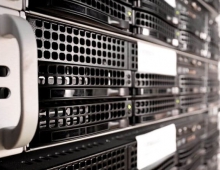
IBM Makes Quantum Computing Available on IBM Cloud
IBM Research is making quantum computing available to members of the public, who can access and run experiments on IBM?s quantum processor. IBM scientists have built a quantum processor that users can access through a first-of-a-kind quantum computing platform delivered via the IBM Cloud onto any desktop or mobile device. IBM believes quantum computing is the future of computing and has the potential to solve certain problems that are impossible to solve on today's supercomputers.
The cloud-enabled quantum computing platform, called IBM Quantum Experience, will allow users to run algorithms and experiments on IBM's quantum processor, work with the individual quantum bits (qubits), and explore tutorials and simulations around what might be possible with quantum computing.
The quantum processor is composed of five superconducting qubits and is housed at the IBM T.J. Watson Research Center in New York.
A universal quantum computer can be programmed to perform any computing task and will be exponentially faster than classical computers for a number of important applications for science and business.
A universal quantum computer does not exist today, but IBM envisions medium-sized quantum processors of 50-100 qubits to be possible in the next decade. With a quantum computer built of just 50 qubits, none of today's TOP500 supercomputers could successfully emulate it, reflecting the tremendous potential of this technology. The community of quantum computer scientists and theorists is working to harness this power, and applications in optimization and chemistry will likely be the first to demonstrate quantum speed-up.
With Moore's Law running out of steam, quantum computing will be among the technologies that could usher in a new era of innovation across industries.
Quantum information is very fragile and needs to be protected from any errors that can result from heat and electromagnetic radiation. Signals are sent in and out of a cryogenic dilution refrigerator to measure operations on the quantum processor.
The IBM team has made a number of engineering advances both at the device level and in the electronic controls to give IBM Quantum Experience users unprecedented and reliably high-quality performance in this five-qubit processor.
The team has built a dynamic user interface on the IBM Cloud platform that allows users to easily connect to the quantum hardware via the cloud. The team sees the introduction to the public of this complete quantum computing framework as just the start of a new user community, which embraces the quantum world and how it works.
In the future, users will have the opportunity to contribute and review their results in the community hosted on the IBM Quantum Experience and IBM scientists will be directly engaged to offer more research and insights on new advances. IBM plans to add more qubits and different processor arrangements to the IBM Quantum Experience over time, so users can expand their experiments and help uncover new applications for the technology.
Quantum computing works fundamentally differently from today?s computers. A classical computer makes use of bits to process information, where each bit represents either a one or a zero. In contrast, a qubit can represent a one, a zero, or both at once, which is known as superposition. This property along with other quantum effects enable quantum computers to perform certain calculations vastly faster than is possible with classical computers.
Most of today?s quantum computing research in academia and industry is focused on building a universal quantum computer. The major challenges include creating qubits of high quality and packaging them together in a scalable way, so they can perform complex calculations in a controllable way.
IBM employs superconducting qubits that are made with superconducting metals on a silicon chip and can be designed and manufactured using standard silicon fabrication techniques.





















